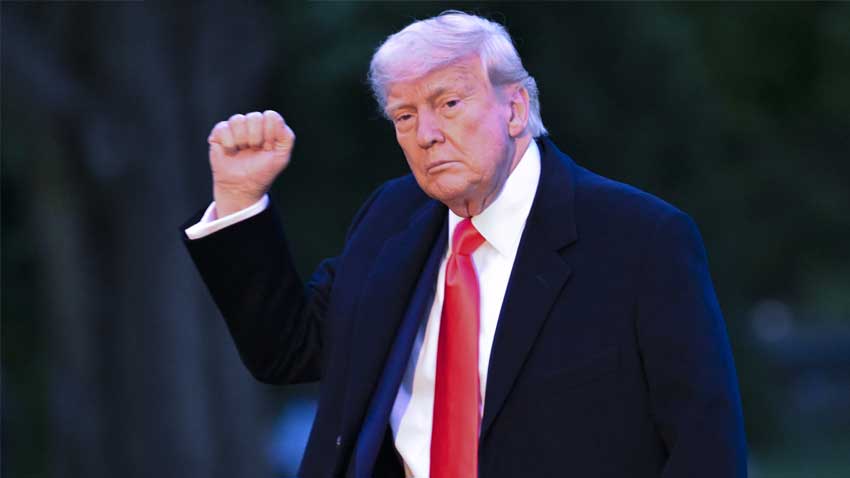
The threat comes after weeks of negotiations with the key U.S. allies and top trading partners failed to reach a comprehensive trade deal, Reuters reported.
In an escalation of the trade war that has angered U.S. allies and rattled investors, Trump announced the latest tariffs in separate letters to European Commission President Ursula von der Leyen and Mexico’s President Claudia Sheinbaum posted on Truth Social on Saturday.
Both the EU and Mexico responded by calling the tariffs unfair and disruptive while pledging to continue to negotiate with the U.S. for a broader trade deal before the August deadline.
The European Union, opens new tab and Mexico are among the largest U.S. trading partners.
Trump has sent similar letters to 23 other U.S. trading partners this week, including Canada, Japan and Brazil, setting blanket tariff rates ranging from 20% up to 50%, as well as a 50% tariff on copper.
Trump said the 30% tariff rate was “separate from all sectoral tariffs”, which means 50% levies on steel and aluminum imports and a 25% tariff on auto imports would remain at those levels.
The August 1 deadline gives countries targeted by Trump s letters time to negotiate a trade deal that could lower the threatened tariff levels.
The spate of letters shows Trump has returned to the aggressive trade posture that he took in early April when he announced a slew of reciprocal tariffs against trading partners that sent markets tumbling before the White House delayed implementation.
But with the stock market hitting record highs in recent weeks and a bullish economy, Trump is showing no signs of slowing down his trade war.
Trump promised to use the 90-day pause in April to strike dozens of new trade deals with trading partners, but has only secured framework agreements with Britain, China and Vietnam.
The EU had hoped to reach a comprehensive trade agreement with the U.S. for the 27-country bloc.
Read more: How Trump’s shake-up could undermine US global influence amid multiple crises
Trump s letter to the EU included a demand that Europe drop its own tariffs, an apparent condition of any future deal.
"The European Union will allow complete, open Market Access to the United States, with no Tariff being charged to us, in an attempt to reduce the large Trade Deficit," Trump wrote.
EU President von der Leyen said the 30% tariffs “would disrupt essential transatlantic supply chains, to the detriment of businesses, consumers and patients on both sides of the Atlantic.”
She also said while the EU will continue to work towards a trade agreement, they “will take all necessary steps to safeguard EU interests, including the adoption of proportionate countermeasures if required.”
Mexico s economy ministry said Saturday that it was informed the U.S. would send a letter during a bilateral meeting Friday with U.S. officials.
"We mentioned at the roundtable that it was unfair treatment and that we did not agree," the ministry s statement said.
MEXICO S TARIFF RATE LOWER THAN CANADA S
Mexico s proposed tariff level is lower than Canada s 35% rate, with both letters citing fentanyl flows even though government data shows the amount of the drug seized at the Mexican border was significantly higher than the Canadian border.
"Mexico has been helping me secure the border, BUT, what Mexico has done, is not enough. Mexico still has not stopped the Cartels who are trying to turn all of North America into a Narco-Trafficking Playground," Trump wrote.
Mexico sends more than 80% of its total exported goods to the U.S. and free trade with its northern neighbor drove Mexico to overtake China as the U.S. s top trading partner in 2023.
The EU had initially hoped to strike a comprehensive trade agreement but more recently had scaled back its ambitions and shifted toward securing a broader framework deal similar to the one Britain brokered that leaves key details to be negotiated.
The 27-country bloc is under conflicting pressures as powerhouse Germany urged a quick deal to safeguard its industry, while other EU members, such as France, have said EU negotiators should not cave into a one-sided deal on U.S. terms.
Trump s cascade of tariff orders since returning to the White House has begun generating tens of billions of dollars a month in new revenue for the U.S. government. U.S. customs duties revenue shot past $100 billion in the federal fiscal year through to June, according to U.S. Treasury data on Friday.
The tariffs have also strained security relationships with some of America s closest partners.
Japanese Prime Minister Shigeru Ishiba said last week that Japan needed to wean itself from U.S. dependence in key areas. The fight over tariffs has also prompted Canada and some European allies to reexamine their security dependence on the United States, with some looking to purchase non-U.S. weapons systems.


